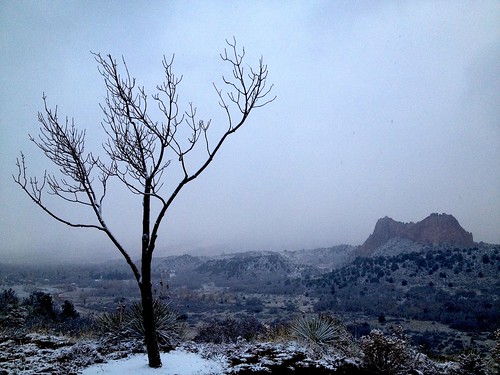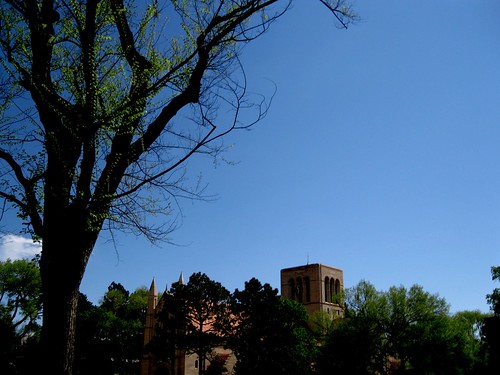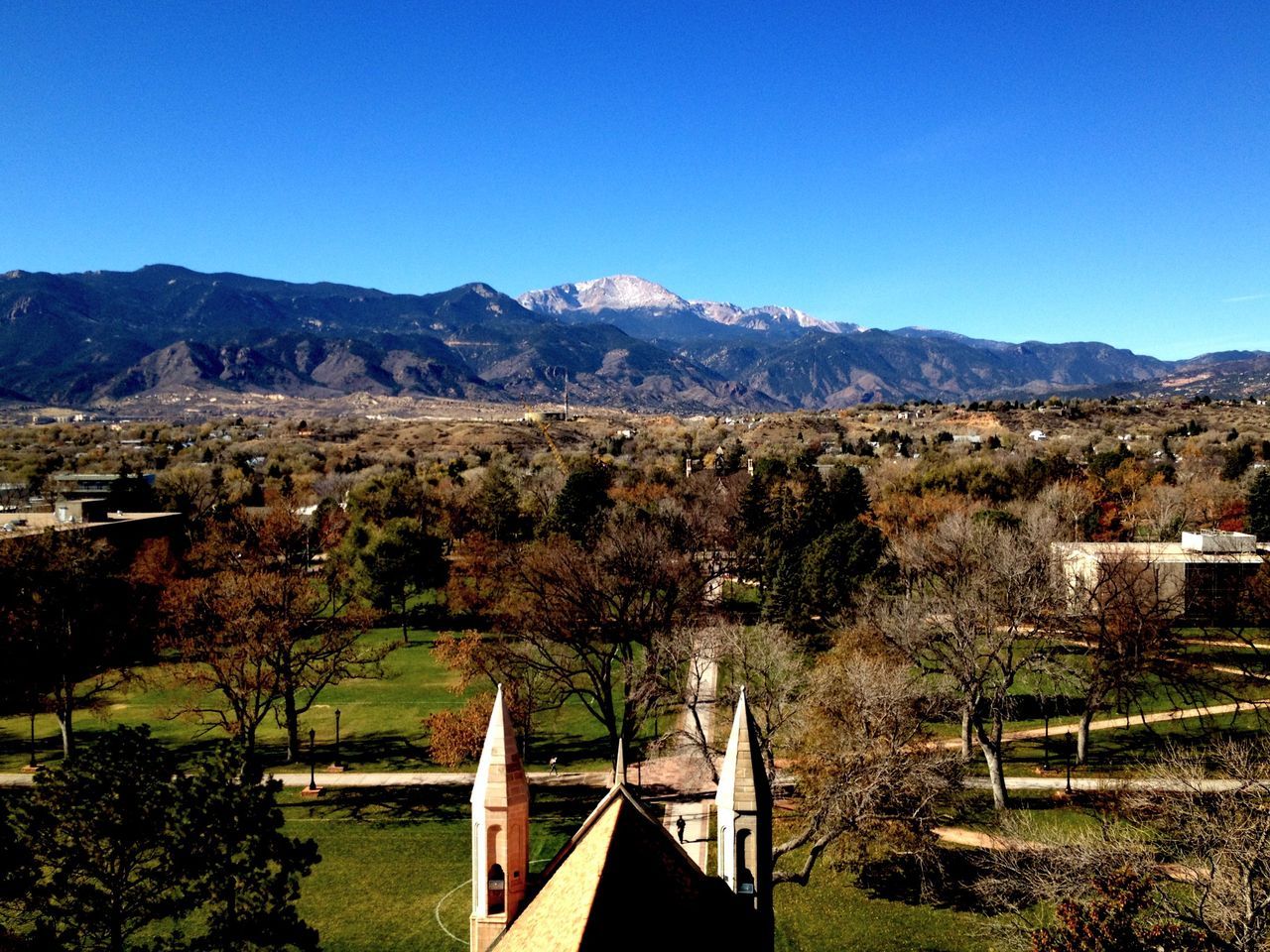A new block, a new course, and, in one day, a new month.
Last time I blogged it was from a hostel in London, during the middle of a sticky hot July, in honor of Shakespeare. Now I’m back on campus. Back in the cocoon of dear Colorado College, where most of the vibrant autumn foliage has already fallen in respect to the recent first snow. I’m home, at my desk, facing west–facing the snow dusted Pikes Peak, facing (though a 1000 miles away) California, my childhood, my memories. Sitting at my desk in my historic house of a home for the year, I face all that I consider sacred (the west). And, here, now, I can pause and appreciate that I’m embarking on my next block journey: Indigenous Religious Traditions.

Sorry. I might be a bit cheesy the next three weeks. I’m excited. I’m passionate. If you’re a CC student, then you’re familiar with the point system we’re enforced to navigate come registration season. And let’s just say I gambled heavily for this course. Let’s just say I went with an odd number in the high, high, high range. I wasn’t taking any risks: though unlike the majority of my peers I hadn’t heard a word about other students’ experiences in past runs (a winter start transfer, I was in a sort of naive shadow), I knew from the moment I saw the course listing that, if there was any class I needed to take my 2012-2013 year, Indigenous Religious Traditions was it. Silly to say maybe, but it felt so absurdly essential for my career at CC.
Some high expectations, right?
And yet, I have no doubt that the next three weeks will not disappoint. We’re only on day two and already I feel rawer, more aware, centered. Is it too soon to say that? I don’t know. Maybe it is, but regardless I’m only writing my truth. Perhaps it’s my personal tangled relationship with religion, or maybe my innate connection to land, or even having spent so much time in places with great indigenous spiritual history… but the topic of indigenous people, the issues, the traditions, their stories and their truths, well, it speaks to me so deeply.
Today, following an invigorating (yet somehow quiet–seemingly a great sense of respect already exists with our seminar room) discussion, Bruce–fabulous College Chaplain and our course professor–led us to Shove Chapel: arguably the center, the core, of our campus. And while I’d love to connect the mini field trip across campus to our day’s reading, use some critical logistics, my internal experience is what my fingers are yearning to type towards, and so… I will.

We all know Shove. We all have our own moments associated with Shove. We see it every day, pass it every day. We attend celebrations, inaugurations, readings, symposiums, even fashion and drag shows within its high, reverent limestone walls. But today, this morning, was the first time I’d ever really paused and considered the chapel and its impact on not only myself, but the community of CC as a whole. Stepping into its doors, blinking blinking, a chill, coming into the dimmed candle lit entry, the threshold, so somber in contrast to the young, bright Colorado afternoon, I paused, we paused. Outside I’d been antsy. I was hungry and my caffeine was draining and my to do list for after class was longer than comprehensible. But inside, right there, my mind was, in some sense, dimmed: calm. I thought of Jung’s theory of individuation–how we must face our shadow to individuate, to become our highest self. It seems only fitting then that the entrance to Shove, a chapel, a place considered sacred, forces one into a shadow of some regards.
As we moved deeper, we paused and thought and spoke of our reactions, the emotions evoked, discussed its magnificence, its acceptance of all beliefs and traditions, its stained glass windows portraying stories of both academia and religion, its history and (in my opinion) its rebirth (following Bruce’s arrival to campus)–all of which absolutely deserves a blog of its own—and eventually climbed the narrow tall tower. Today was my first time following the chilled curving steps, my first time standing on the roof of Shove Chapel, so high, standing on what one might consider the peak of campus, facing the beloved peak of Colorado Springs. And I thought of the notion of “sacred”. In his article “Giving Voice to Place”, Belden C. Lane offered three models: ontological, cultural, and phenomenological. Is a place sacred by its own accord? Is its sacredness placed upon it through ritual activity–a manifestation of cultural devotion? Or are all the aspects essential, is a sacred place threaded by the whole story (cultural, land, etc)? I mean, how do you define what is sacred (Mircea Eliade would argue it is the opposite of the profane)? Does one mind, one perception, have the sway to make something sacred, or does it require centuries of communal devotion?
I don’t know. I don’t know the how or the why behind what makes a place sacred, nor do I believe knowing its development is necessary. The mystery–the endless discussion–is inescapable. What I do know though is that standing on the top of Shove Chapel, all the westside of Colorado Springs–our campus, our home–sprawled out before me, with Pikes Peak high and bright, an arrow shooting to the sky, I recognized that, for me, the Front Range is sacred. For whatever reason, since the day I first landed in Colorado Springs in 2006 at the silly age of fourteen, I’ve been utterly connected to Pike’s and the land blooming before it. It’s my compass: the beacon that always returns me to stability–reminding me of my true self, my intentions and dreams–for the last seven years. One glance at those mountains and I am calm and centered: filled with hope. And, so, regardless of the hows and the whys and whether or not a collective conscious has fed my devotion, for me, this land is sacred and I’m thankful for the wander up Shove’s tower, for the reminder of its essentiality in my life.

Only on Day 2 of Indigenous Religious Traditions and already feeling rather fleshed open. Obviously it goes without saying that I’m quite enthused for the next three weeks.